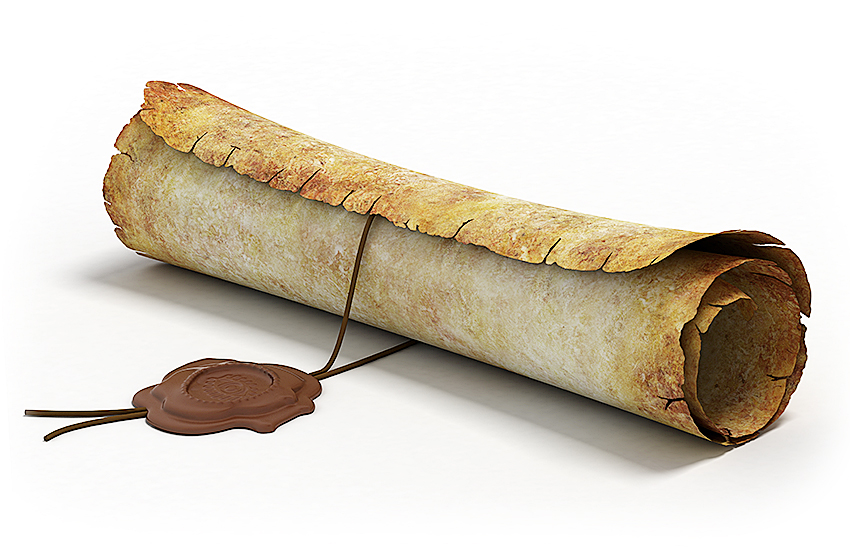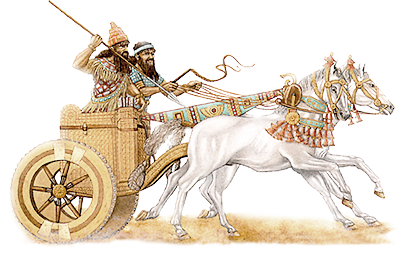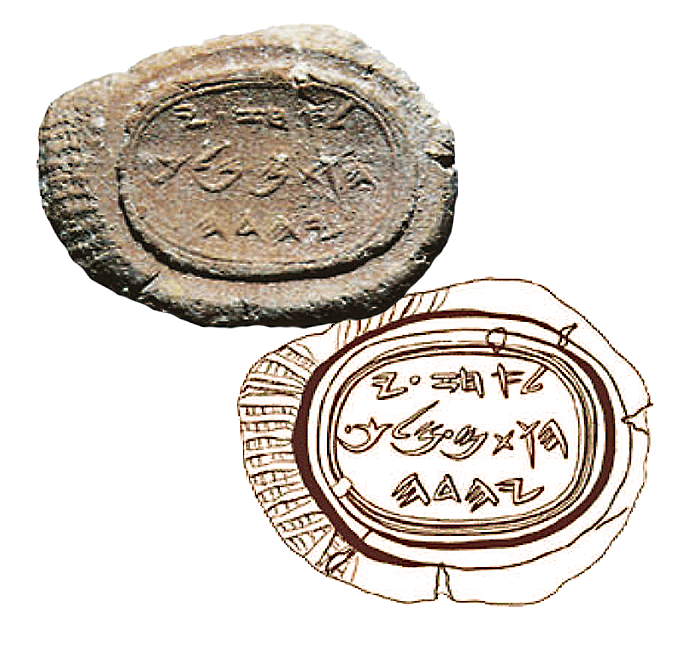
Bible, History, Archaeology
Bible,
History,
Archaeology
A seal of Ahaz,
king of Judah
A collector recently acquired several seal impressions. One of them bears the following inscription: «To Ahaz, (son of) Yehotam, king of Judah».».
 Introduction
Introduction
The seal impression is a small ball of clay (bubble) glued to strings attaching a roll of papyrus or other document. The marks of the papyrus fibers and strings are still clearly visible on the back of the bulla. The writing is very neat, in the style of the second half of the 8th century BC. Dots (.) separate the words, as on long official and public inscriptions. The owner is certainly an important figure.
Image opposite: this is the imprint of the personal seal of Ahaz, King of Judah. The inscription reads:
«To Ahaz, (son of) Yehotam, King of Judah» © The Shlomo Moussaieff Collection.

Image opposite: a possible 3d reconstruction of an ancient manuscript with its seal. © Kniazeff 235735504.
Historical background
The reign of Ahaz was marked by important transitions. The weakening of the great powers, the Hittite and Egyptian empires, had allowed the autonomy of small kingdoms such as Judah and Israel for two centuries. What's more, wealth had been accumulating for a century thanks to the boom in trade.
Pekah, king of Israel, and Recin II, king of Aram-Damascus, tried to form an anti-Assyrian front by asking Ahaz for help. When Ahaz refused, Pekah and Recin invaded Judah and laid siege to Jerusalem. Despite prophet Isaiah (or Ésaïe) not to leave the fate of the country in the hands of a foreigner, Ahaz asked Assyria for help, which it granted him in exchange for treasures of the Temple (erected by Solomon in the 10th century B.C.) and the royal palace (2 Kings 16,5-9).
Image opposite: an Assyrian warrior. Public domain.
Ahaz appears under the name of «Jehoahaz» (Ia-ú-ḫa-zi) in the Annals from Teglath-Phalasar III.
As Teglath-Phalasar III, Peqah and Recin laid siege to Jerusalem. The Assyrian armies attack the Philistine country, plunder Samaria, take Damascus, assassinate Recin, conspire in the murder of Pekah and install Hosea on the throne of the northern kingdom. The kingdom of Judah becomes the vassal of the Assyrian king, and Assyrian cult practices are introduced into the rites of the Jerusalem Temple (2 Chronicles 28, 3 ; 2 Kings 16).
The fall of the kingdom of Israel

This episode marks the end of the kingdom of Israel (in - 722/721), which became the Assyrian province of Samerina.

 Introduction
Introduction